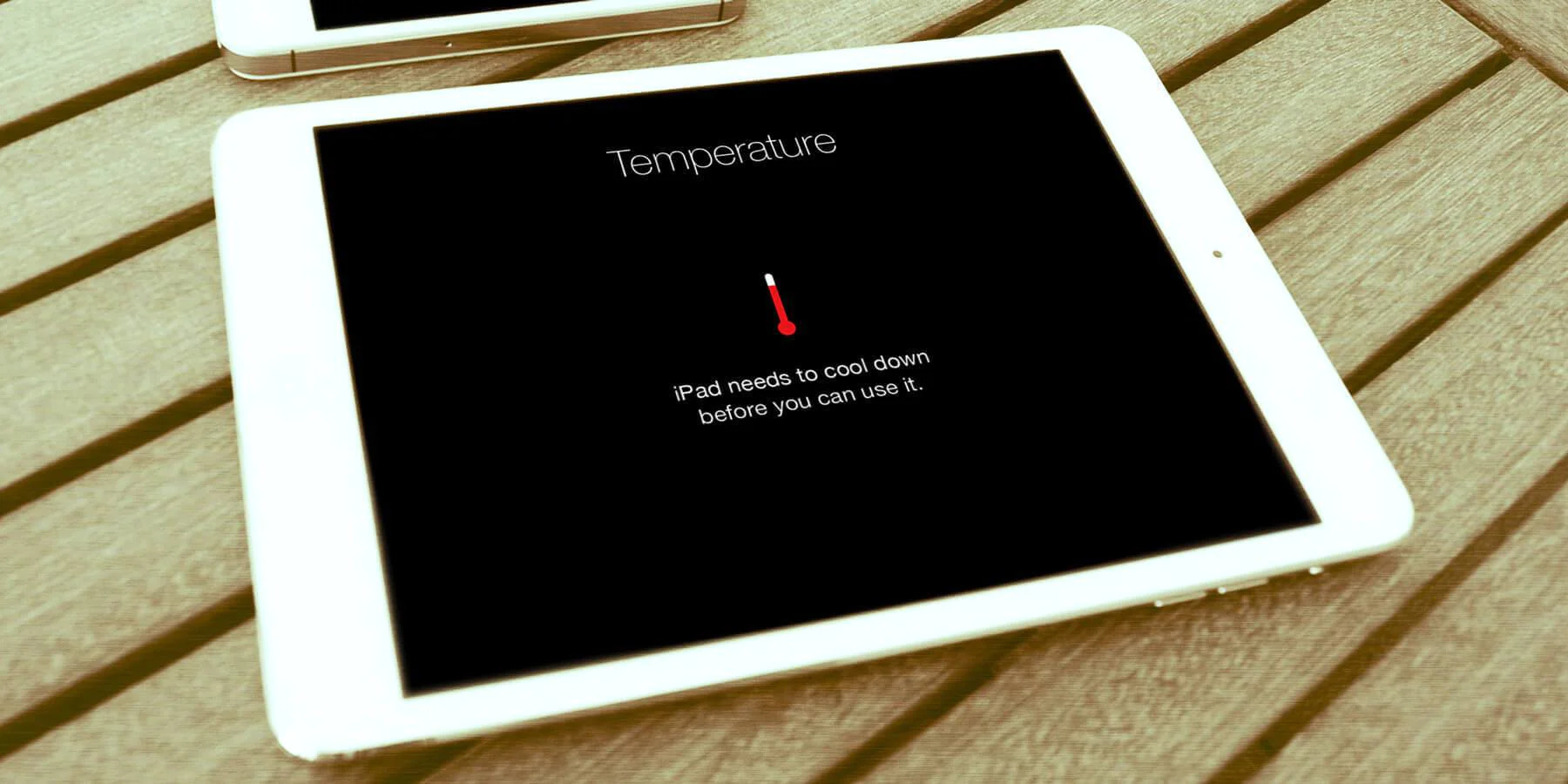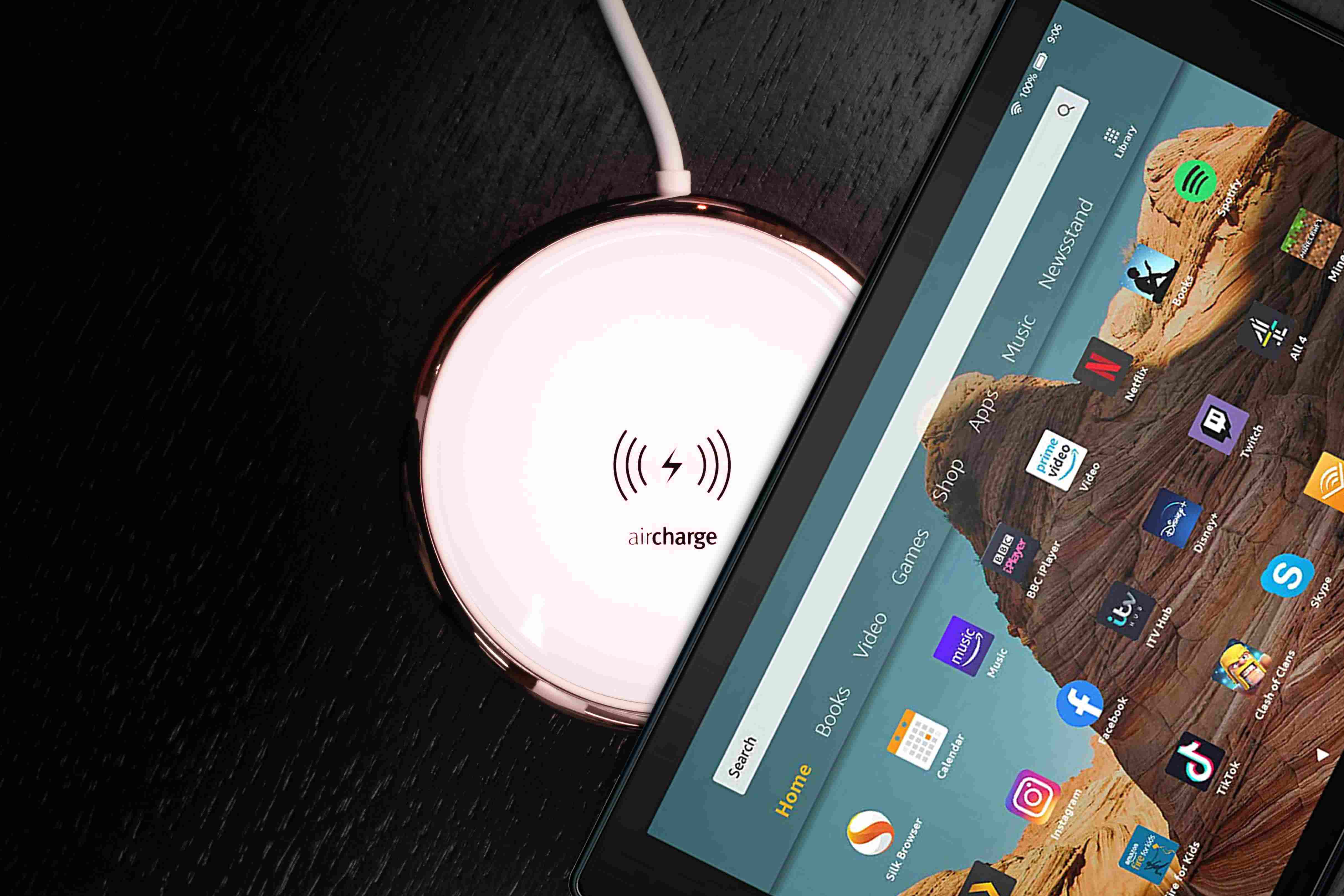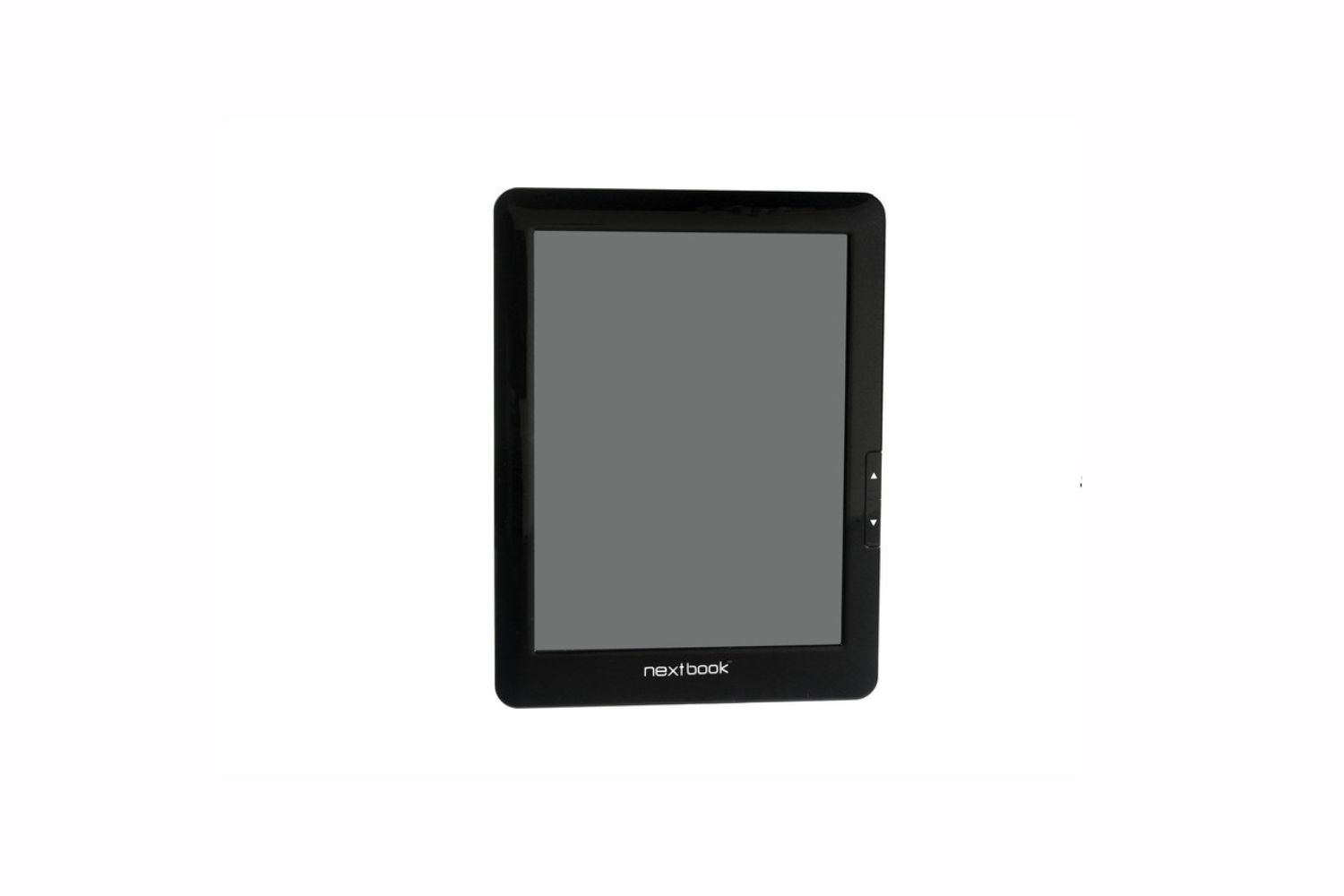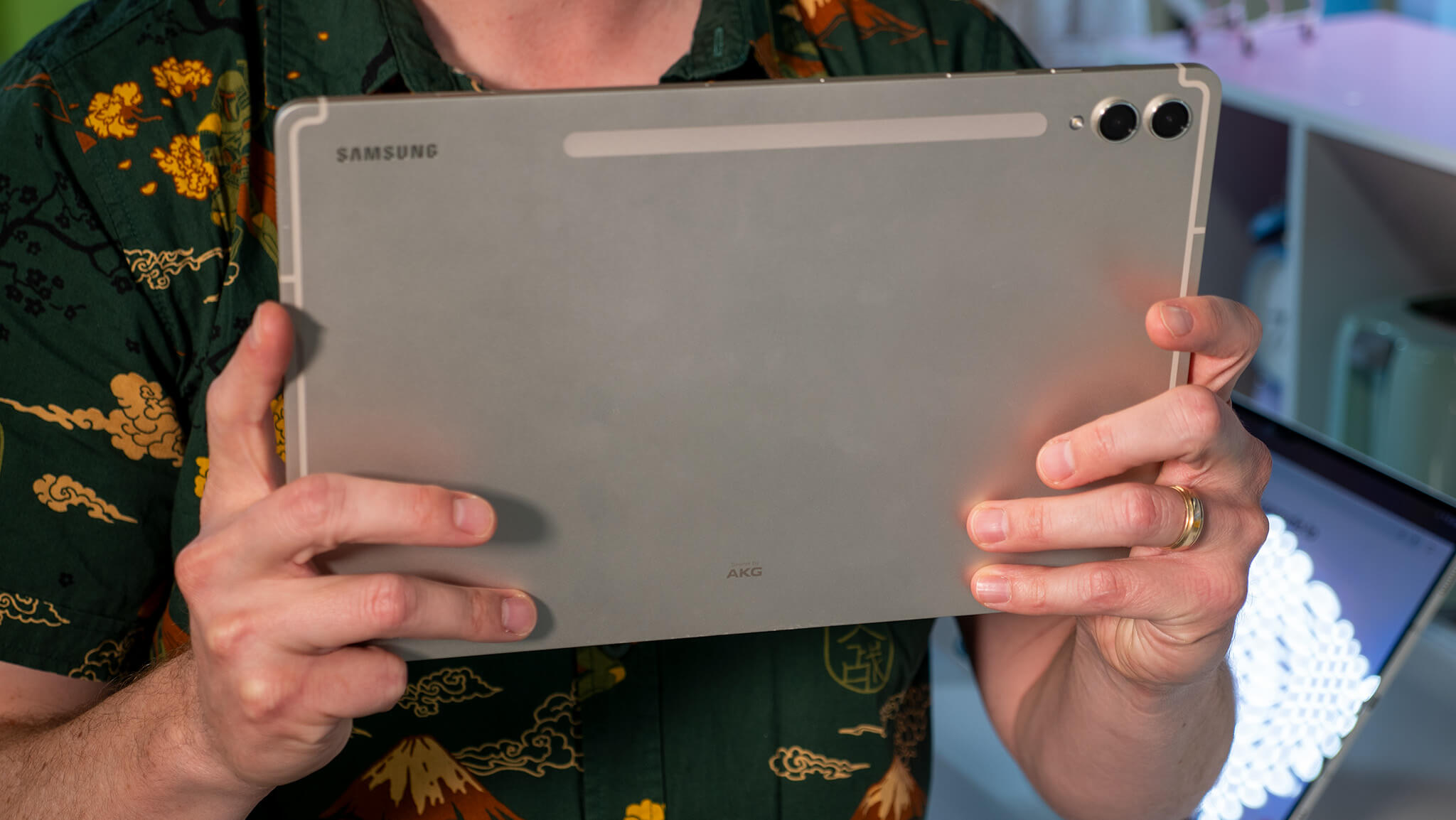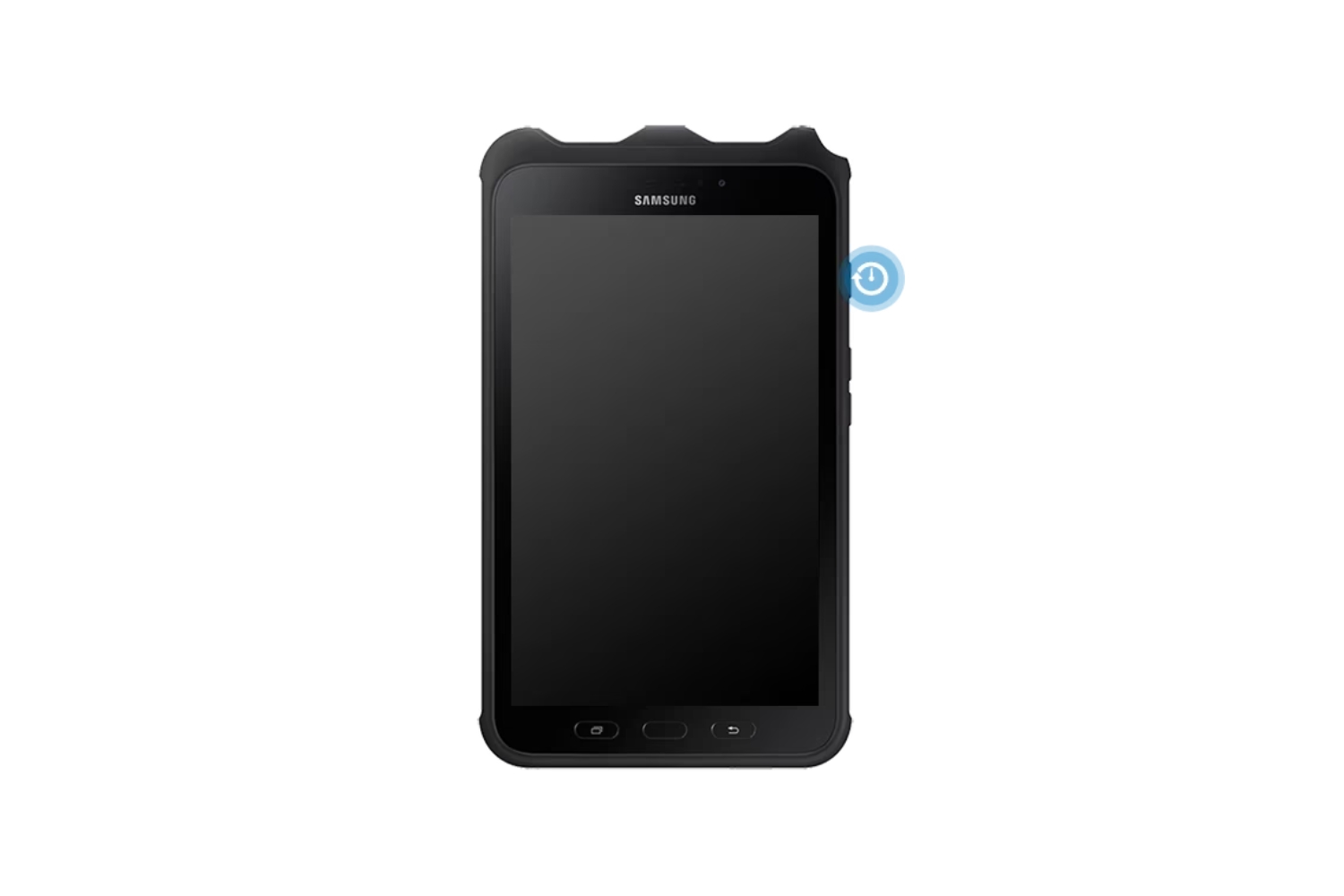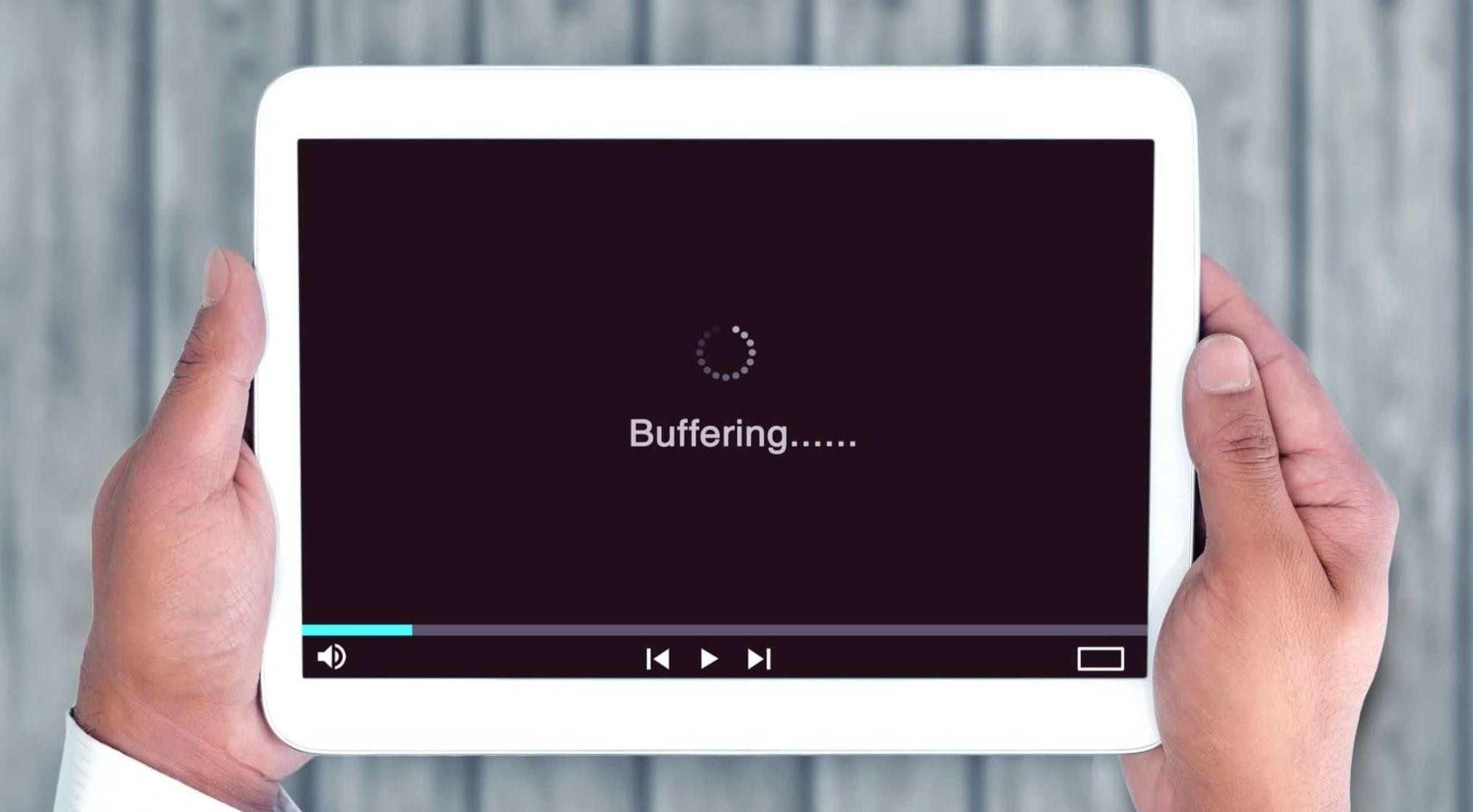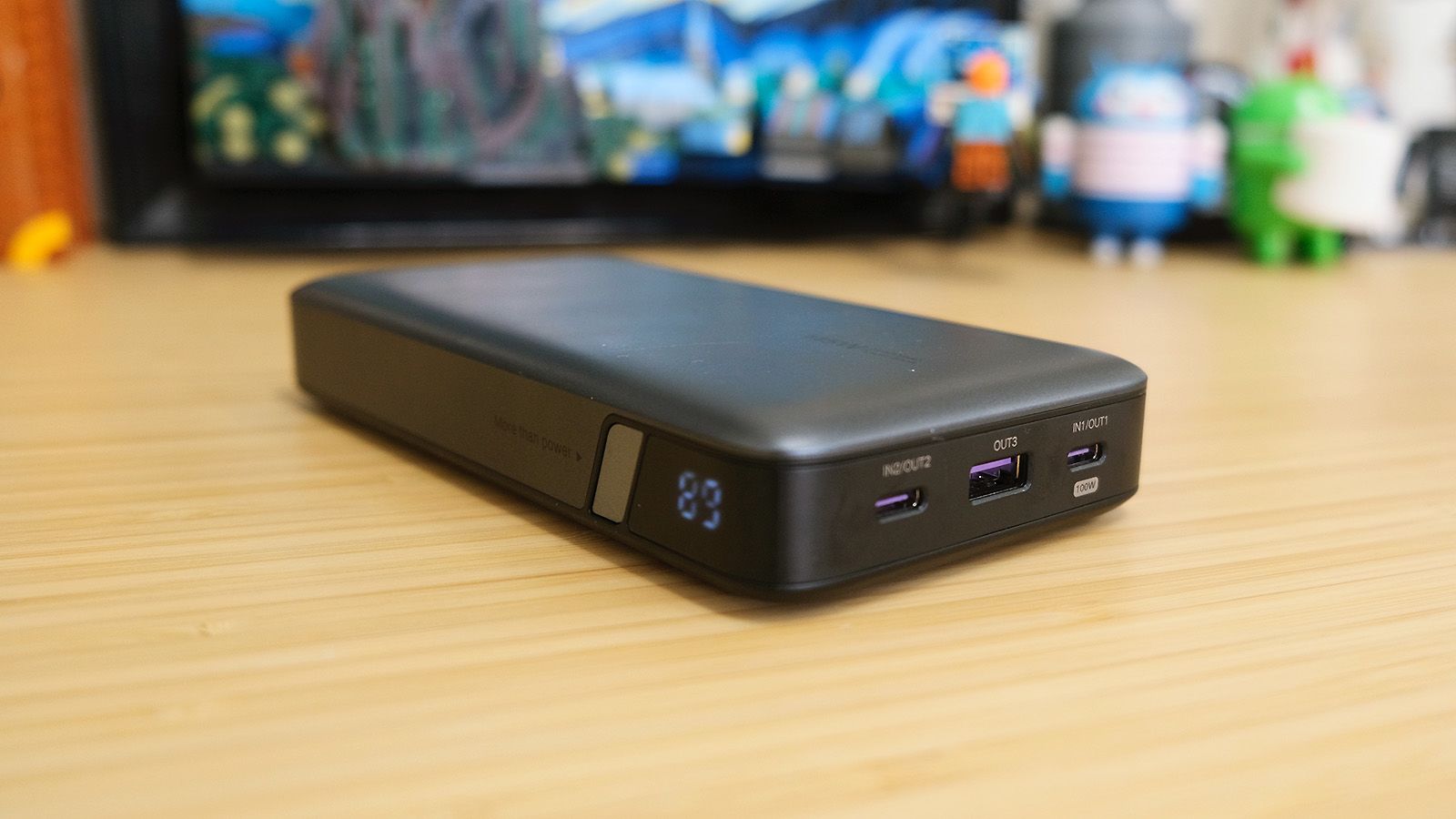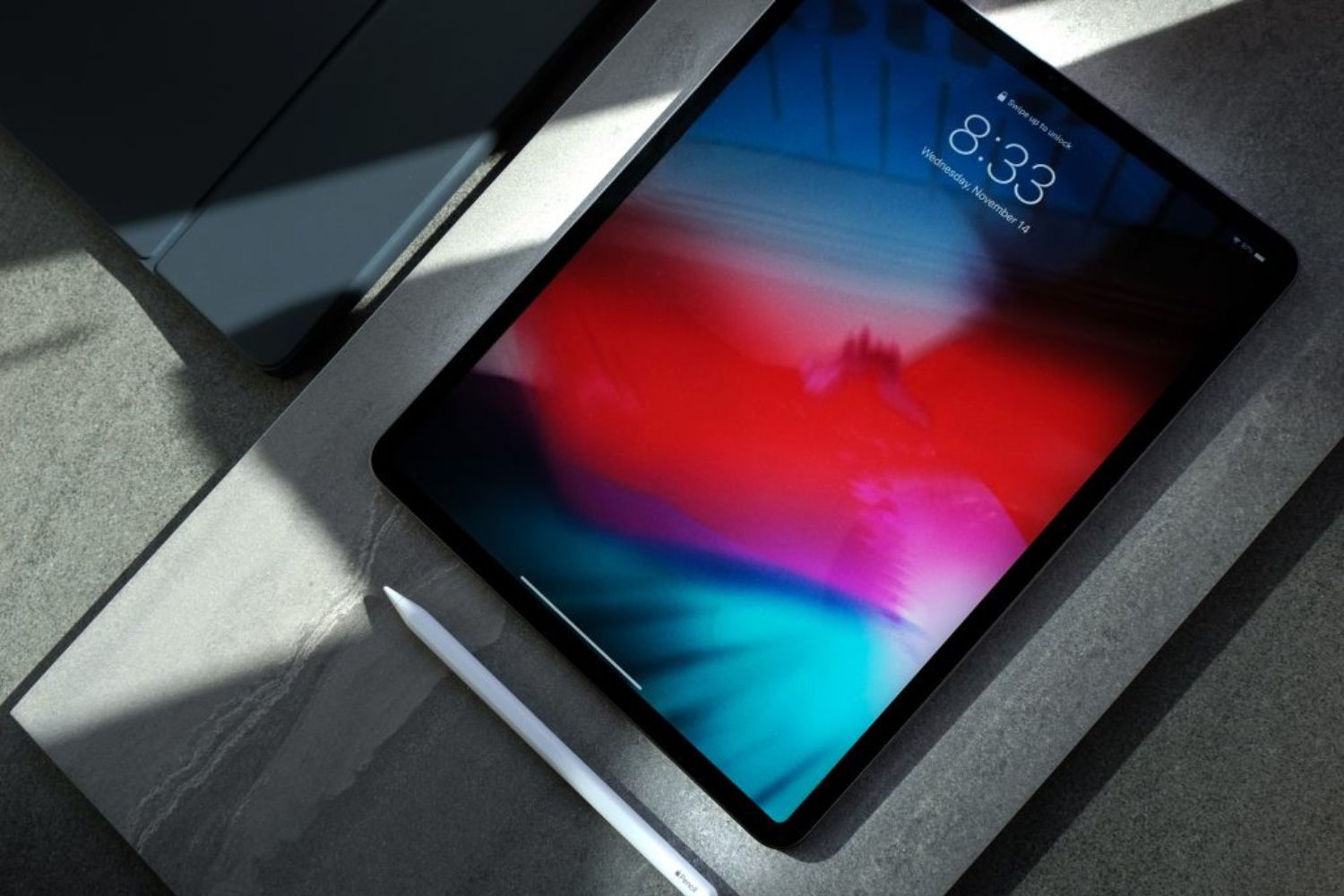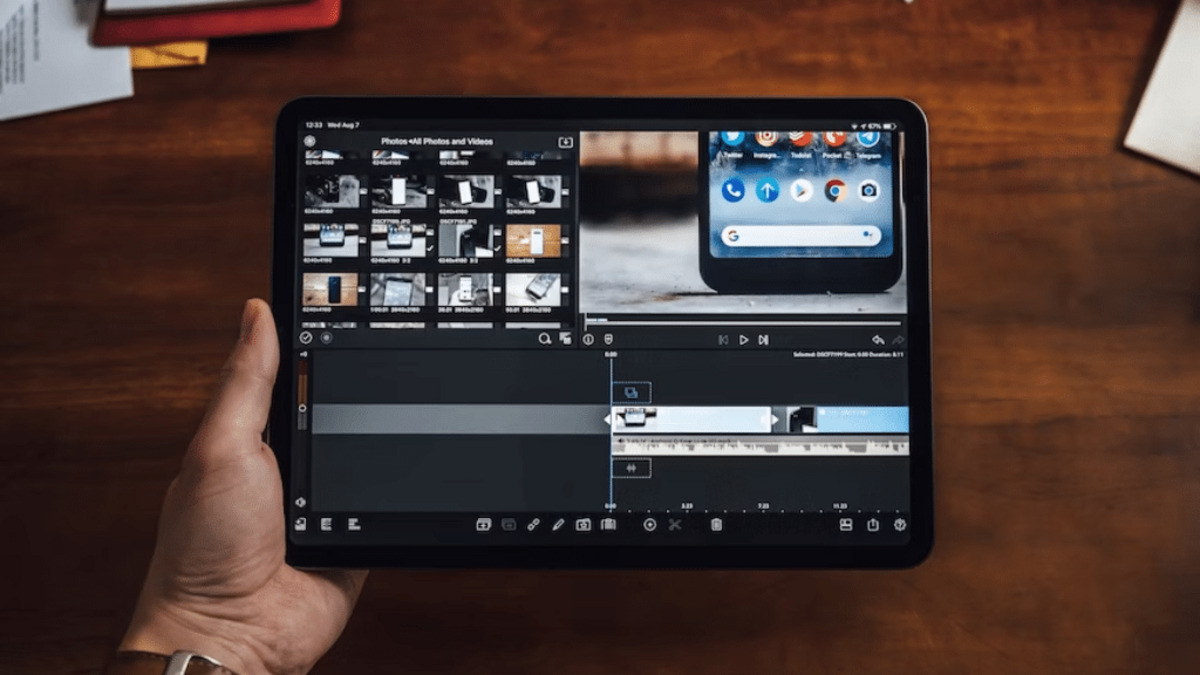Common Reasons for Tablet Overheating
Tablets have become an essential part of our daily lives, helping us stay connected, entertained, and productive. However, one common issue that tablet users often face is device overheating. If you’re wondering why your tablet keeps overheating, here are some common reasons to consider:
- Background App Activity: One of the main culprits behind tablet overheating is excessive background app activity. Many apps continue running in the background, consuming precious system resources and generating heat. To address this, periodically check and close unnecessary apps running in the background.
- High Display Brightness: Tablets offer vibrant displays that enhance our visual experience. However, keeping the display brightness at maximum levels for extended periods can generate a significant amount of heat. Adjusting the brightness to a comfortable level can help alleviate overheating issues.
- Heavy Multitasking: Tablets are designed to handle multiple tasks smoothly, but pushing them beyond their limits can lead to overheating. When you have numerous demanding apps running simultaneously, the CPU and GPU work harder, generating more heat. Prioritize essential tasks and avoid running excessive apps simultaneously to prevent overheating.
- Gaming or Graphics-Intensive Apps: Tablets are widely used for gaming, which can put a considerable strain on the device’s resources. Advanced graphics, high frame rates, and intense processing can generate a significant amount of heat. Consider taking breaks during extended gaming sessions to allow your tablet to cool down.
- Too Many Open Tabs or Applications: Having an excessive number of open tabs or applications can overload the device’s memory, leading to increased heat generation. Close unnecessary tabs and applications to free up system resources and prevent overheating.
- Software Updates or Glitches: Sometimes, software updates can lead to overheating issues if they are not optimized correctly. Additionally, software glitches or bugs can cause excessive CPU usage, resulting in overheating. Keep your tablet updated and consider resetting or reinstalling problematic apps to resolve such issues.
- Insufficient Internal Storage Space: Running out of internal storage space can impact the performance of your tablet, leading to increased heat generation. Regularly remove unnecessary apps, files, and media to free up space and optimize your device’s performance.
- Excessive Charging or Power Usage: Using your tablet while it is charging or engaging in power-intensive activities like video streaming or GPS navigation can generate heat. To prevent overheating, avoid using the tablet while it’s charging and limit the use of power-intensive functions.
- Inadequate Ventilation or Airflow: Tablets require proper ventilation to dissipate heat effectively. Using your tablet on soft surfaces or blocking the vents can hinder airflow and cause overheating. Place your tablet on a flat, hard surface and ensure that the vents are not obstructed for optimal cooling.
- Faulty Battery or Hardware Issues: In some cases, overheating may be a result of a faulty battery or hardware issues. If your tablet consistently overheats despite taking preventive measures, it’s recommended to contact the manufacturer or a professional technician for further assistance.
Understanding the common reasons for tablet overheating is the first step towards resolving the issue. By implementing the necessary precautions and optimizing your tablet’s usage, you can enjoy a seamless and heat-free experience with your device. Remember to keep your tablet clean, update software regularly, and avoid overloading your device to prevent overheating in the future.
Background App Activity
One of the primary reasons why your tablet may be overheating is excessive background app activity. Background apps continue running even when you’re not actively using them, consuming valuable system resources and generating heat in the process.
Many apps, such as social media platforms, messaging applications, and email clients, constantly update in the background to fetch new data and deliver notifications. While this feature is convenient, it can put a strain on your tablet’s CPU and battery, leading to increased heat production.
To address this issue, it’s important to periodically check and close unnecessary apps running in the background. Most tablets have a task manager or a recent apps menu that allows you to see which apps are currently running. By closing the apps that you don’t need, you can free up system resources and reduce the strain on your tablet, helping to prevent overheating.
Additionally, some apps have settings that allow you to control their background activity. For example, you can choose to disable background refresh for certain apps or adjust their update frequency. By optimizing these settings, you can reduce the overall background app activity, thereby minimizing heat generation.
Another useful tip is to make use of an app optimization feature, if available on your tablet. This feature identifies apps that consume excessive CPU or battery resources and provides recommendations to improve performance and reduce heat generation. By following these recommendations, you can optimize your tablet’s usage and mitigate overheating issues.
In some cases, certain apps may be more resource-intensive than others, leading to significant heat generation. If you notice that a particular app consistently causes your tablet to overheat, consider uninstalling or replacing it with a more lightweight alternative. This can help alleviate the strain on your tablet’s resources and prevent overheating episodes.
Lastly, keeping your apps up to date can also contribute to reducing overheating caused by background app activity. App updates often include bug fixes, performance improvements, and optimizations, which can help reduce resource consumption and heat generation.
By managing your tablet’s background app activity and optimizing app settings, you can significantly mitigate overheating issues. Remember to periodically assess the apps running in the background, make use of app optimization features, and consider replacing resource-intensive apps if necessary. These practices will not only help in preventing overheating but also improve your tablet’s overall performance and battery life.
High Display Brightness
The brightness level of your tablet’s display plays a significant role in its overall energy consumption and heat generation. Keeping the display brightness at maximum levels for extended periods can result in your tablet overheating.
Tablets are designed to provide vibrant and clear visuals, allowing users to enjoy movies, games, and other content in high definition. However, the brighter the display, the more power it requires to function, which in turn generates more heat.
To avoid overheating caused by high display brightness, it is recommended to adjust the brightness to a comfortable level. Most tablets offer options to manually adjust the screen brightness through the settings menu or quick access controls.
Reducing the display brightness not only helps in preventing overheating but also conserves battery life. By finding the right balance between brightness and readability, you can ensure a more pleasant viewing experience while minimizing heat generation.
Another useful tip is to enable the auto brightness feature if your tablet supports it. This feature uses ambient light sensors to automatically adjust the display brightness based on the surrounding lighting conditions. By allowing the tablet to regulate the brightness, you can optimize energy consumption and reduce heat generation.
In addition to adjusting the brightness, it’s also important to be mindful of screen timeout settings. When the display remains on for longer durations, it consumes more power and generates additional heat. Setting a shorter screen timeout interval can help conserve energy and reduce the chances of overheating.
Furthermore, using darker wallpapers and themes can also assist in minimizing heat production. Dark colors require less energy for the display to render, resulting in decreased heat generation.
Remember, maintaining a balanced display brightness is crucial for both performance and temperature control. By adjusting the brightness level, utilizing auto brightness, setting shorter screen timeout intervals, and opting for darker themes, you can effectively mitigate overheating issues caused by high display brightness.
Heavy Multitasking
Tablets are designed to handle multiple tasks simultaneously, making them versatile devices for productivity and entertainment. However, heavy multitasking can put a strain on the tablet’s resources, leading to increased heat generation and potential overheating.
When you engage in heavy multitasking, such as running multiple resource-intensive apps or performing demanding tasks simultaneously, the tablet’s CPU and GPU have to work harder to keep up with the demands. This increased workload results in higher energy consumption and heat production.
To prevent overheating caused by heavy multitasking, it’s important to prioritize your tasks and avoid running excessive apps simultaneously. Close any unnecessary applications or tabs that are not actively being used. By reducing the number of active processes, you can free up system resources and reduce the strain on the tablet’s components.
Consider using task management tools or the recent apps menu provided by your tablet’s operating system to get an overview of the applications running in the background. From there, you can identify resource-intensive apps and close or pause them, reducing their impact on the tablet’s performance and temperature.
Additionally, it’s good practice to periodically clean up your tablet’s RAM (Random Access Memory) by clearing the cache or using third-party optimization apps. This helps in freeing up memory and improving the tablet’s responsiveness, which in turn reduces heat generation.
If you frequently engage in heavy multitasking and find your tablet consistently overheating, it may be worth considering upgrading to a device with a more powerful processor and increased RAM. Such devices can better handle resource-intensive tasks and minimize the risk of overheating.
Lastly, taking short breaks during extended periods of heavy multitasking can allow your tablet to cool down. Giving it time to rest and dissipate accumulated heat can help in maintaining optimal performance and prolonging the device’s lifespan.
By being mindful of your multitasking habits, optimizing system resources, and periodically giving your tablet breaks, you can effectively mitigate overheating issues caused by heavy multitasking. This ensures a smoother and more enjoyable user experience while maximizing the tablet’s performance and longevity.
Gaming or Graphics-Intensive Apps
Tablets have become increasingly popular for gaming thanks to their portability and impressive graphics capabilities. However, running graphically demanding games or other graphics-intensive applications for extended periods can result in your tablet overheating.
Gaming and graphics-intensive apps often require significant processing power from the tablet’s CPU and GPU. These resources work hard to render detailed graphics, complex animations, and provide a smooth gaming experience. As a result, they generate substantial heat.
If you frequently experience overheating during gaming sessions or while using graphics-intensive apps, here are some tips to prevent this issue:
1. Take breaks: Extended gaming sessions can put continuous stress on the tablet’s components, resulting in heat buildup. Take short breaks every hour or so to allow your tablet to cool down. This break not only helps prevent overheating but also prevents eye strain and fatigue.
2. Adjust in-game graphics settings: Most modern games allow you to adjust graphics settings to balance performance and visual quality. Consider lowering the graphics settings to reduce the workload on your tablet’s CPU and GPU. This can help minimize heat generation while still providing an enjoyable gaming experience.
3. Use a cooling pad or stand: Investing in a cooling pad or stand specifically designed for tablets can help dissipate heat more effectively. These cooling accessories provide additional airflow to the tablet, assisting in lowering the device’s temperature during intensive gaming sessions.
4. Avoid playing games while charging: Engaging in gaming while your tablet is charging can contribute to increased heat generation. The combination of battery charging and intensive gameplay puts a significant load on the tablet’s internal components, causing it to heat up more quickly. It is advisable to charge your tablet fully before gaming or limit gameplay to shorter sessions when plugged in.
5. Update your games and apps: Developers often release updates that improve performance and optimize resource usage. By keeping your games and apps up to date, you can ensure that any performance-related issues are addressed, reducing the strain on your tablet and minimizing heat generation.
6. Consider external cooling solutions: For intense gaming sessions or when using particularly demanding graphics-intensive apps, you may want to explore external cooling solutions such as cooling fans or active coolers. These accessories attach to your tablet and provide additional cooling to combat overheating.
7. Monitor your tablet’s temperature: Utilize temperature monitoring apps or the built-in system monitoring tools on your tablet to keep an eye on its temperature. If you notice consistently high temperatures, it may be a sign of an underlying issue that requires further investigation or professional assistance.
By implementing these measures, you can enjoy gaming and use graphics-intensive apps on your tablet without experiencing overheating problems. Remember to take breaks, optimize in-game settings, utilize cooling accessories, and keep your tablet updated for an optimal and heat-free gaming experience.
Too Many Open Tabs or Applications
Having too many open tabs or applications on your tablet can contribute to increased heat generation and potential overheating. Each open tab or app utilizes system resources such as memory and processing power, putting strain on the tablet’s CPU and causing it to work harder.
When the tablet’s resources are overloaded, it leads to decreased performance and higher energy consumption, resulting in heat buildup. To avoid overheating caused by having too many open tabs or applications, consider the following tips:
1. Close unnecessary tabs and applications: Periodically review the tabs and applications running on your tablet and close those that are not in use. This frees up system resources and reduces the strain on the CPU, minimizing heat generation.
2. Use tab management features: Many browsers and productivity apps offer tab management features that allow you to group tabs, bookmark them, or save them for later. Utilizing these features helps to keep your tablet organized and prevents excessive tab clutter, optimizing system resources.
3. Enable tab discarding: Some browsers have a feature called tab discarding that automatically suspends or pauses inactive tabs to conserve system resources. Check if your browser supports this feature and enable it to reduce the load on your tablet’s CPU and prevent overheating.
4. Utilize multitasking features: Tablets often have multitasking capabilities that allow you to view and switch between multiple applications simultaneously. However, pushing the multitasking beyond the tablet’s capabilities can lead to overheating. Be mindful of the number of applications you have open at a given time and close those that are not actively needed.
5. Clear cache and temporary files: The cache and temporary files accumulated by your apps and browser can take up valuable space and resources, leading to reduced performance and increased heat generation. Regularly clear the cache and temporary files to optimize your tablet’s performance and prevent overheating.
6. Consider increasing your tablet’s RAM: If you frequently use multiple memory-intensive applications or have a habit of keeping many tabs open, upgrading your tablet’s RAM may help alleviate overheating. More RAM allows for efficient multitasking and better management of system resources.
7. Prioritize essential applications: Identify which applications are crucial to your current task and close those that are not immediately needed. This helps streamline resource allocation and prevents unnecessary strain on your tablet’s CPU.
8. Reboot your tablet: If you notice your tablet is sluggish and running multiple tabs or applications is causing excessive heat, a simple reboot can help refresh the system and release any stuck processes or memory leaks that may be contributing to the issue.
By being mindful of the number of open tabs and applications on your tablet, prioritizing essential tasks, clearing cache and temporary files, and considering hardware upgrades if necessary, you can effectively prevent overheating caused by having too many open tabs or applications. This ensures a smoother and cooler tablet experience.
Software Updates or Glitches
Software updates are essential for maintaining the optimal performance and functionality of your tablet. However, sometimes these updates can lead to overheating issues if they are not optimized correctly or if they introduce glitches or bugs into the system.
If you notice your tablet consistently overheating after a software update, it’s essential to address the issue promptly. Here are some tips to prevent overheating caused by software updates or glitches:
1. Keep your tablet updated: Regularly updating your tablet’s operating system, firmware, and applications can help ensure that you have the latest bug fixes, stability improvements, and performance optimizations. These updates often include measures to prevent or resolve overheating issues caused by software glitches.
2. Check for known issues: Before updating your tablet’s software, check forums, support websites, or official release notes provided by the manufacturer to identify any known issues or reported overheating problems associated with the update. Being aware of potential problems can help you make an informed decision.
3. Reset or reinstall problematic apps: If you notice that certain apps are causing your tablet to overheat after a software update, try resetting or reinstalling them. This can help resolve any app-specific glitches or conflicts that may be contributing to the overheating problem.
4. Optimize app settings: After a software update, it’s a good idea to review the settings of your installed applications. Some apps may have new or updated settings related to power management or background activity that can impact heat generation. Adjusting these settings can help reduce the strain on your tablet’s resources and minimize overheating.
5. Perform a factory reset: If you continue to experience overheating and other problems after a software update, a factory reset can help revert your tablet to its original state. This eliminates any residual software issues or conflicts that may have accumulated over time, providing a fresh start for your device.
6. Contact support: If the overheating issue persists even after following the above steps, it’s recommended to reach out to the manufacturer’s support team. They can provide further guidance, troubleshoot the problem, or offer a solution to address the issue effectively.
Remember, software updates are intended to improve your tablet’s performance and resolve any issues, but sometimes they can inadvertently introduce glitches or cause overheating problems. By staying up to date with software updates, being aware of known issues, optimizing app settings, and seeking assistance when needed, you can minimize the impact of software-related overheating and ensure a more stable and efficient tablet experience.
Insufficient Internal Storage Space
Insufficient internal storage space on your tablet can contribute to overheating issues. When your tablet’s internal storage space is nearly full, it can impact the device’s performance and lead to increased heat generation.
Here are some tips to prevent overheating caused by insufficient internal storage space:
1. Regularly free up storage space: Clearing unnecessary files, apps, and media from your tablet can help free up valuable storage space. Remove old photos and videos, delete unused apps, and transfer files to cloud storage or an external storage device to ensure sufficient internal storage space.
2. Use a file manager app: File manager apps provide a convenient way to locate and manage files on your tablet. They allow you to quickly identify and remove large, redundant files or duplicate files that are consuming storage space. Regularly use a file manager app to declutter your tablet’s storage and prevent overheating.
3. Move apps to external storage: Some tablets support the ability to move apps to external storage, such as a microSD card. If your tablet has this feature, consider moving less frequently used or larger apps to external storage to free up internal storage space and reduce the strain on the device’s resources.
4. Clear app cache: Apps accumulate cache files over time, which can consume a significant amount of storage space. Clearing app cache regularly through the settings menu or using a cache cleaning app can help free up storage space and improve your tablet’s overall performance.
5. Limit offline content: Certain apps and services allow you to store offline content locally on your tablet. While offline content can be convenient, it can also take up a substantial amount of storage space. Be mindful of the offline content you store and periodically clean up or delete unused offline files to free up storage space.
6. Optimize media files: Resizing or compressing large media files can save significant storage space without compromising too much on quality. Consider using media compression tools or apps to optimize videos, photos, and audio files on your tablet.
7. Disable pre-installed apps: Many tablets come with pre-installed apps that you may not use or need. These apps can take up valuable storage space and contribute to overheating. Check your tablet’s settings to see if you can disable or uninstall unnecessary pre-installed apps to free up storage capacity.
8. Backup and delete unused files: Regularly back up your tablet’s files and delete any unused or redundant files that are taking up storage space. This not only helps prevent overheating but also ensures that you have a backup of your important data in case of any unforeseen issues.
By actively managing the storage space on your tablet, you can prevent overheating caused by insufficient internal storage capacity. Regularly free up storage space, move apps to external storage, clear app cache, and optimize media files to ensure your tablet operates smoothly and efficiently.
Excessive Charging or Power Usage
Excessive charging or power usage can contribute to overheating in tablets. When you consistently push your tablet’s battery and power capabilities to their limits, it can result in increased heat generation. Here are some tips to prevent overheating caused by excessive charging or power usage:
1. Avoid using your tablet while charging: Using your tablet while it is charging puts additional strain on the battery and can lead to increased heat production. Whenever possible, avoid using high-power consuming functions such as gaming or resource-intensive apps while your tablet is connected to a power source.
2. Limit power-intensive activities: Engaging in power-intensive activities such as video streaming, GPS navigation, or running graphics-intensive apps for extended periods can cause overheating. Limiting the duration or frequency of these activities can help prevent excessive heat buildup.
3. Manage your tablet’s power settings: Most tablets have power management settings that allow you to optimize energy usage and prevent overheating. Adjust your tablet’s power settings to balance performance and energy consumption. Lowering the screen brightness, shortening the screen timeout duration, and enabling power-saving modes can all contribute to reducing heat generation.
4. Use official chargers and cables: Ensure that you are using the official chargers and cables recommended by the manufacturer. Using unauthorized or low-quality chargers and cables can lead to improper charging, which can generate excessive heat and potentially damage the tablet’s battery.
5. Avoid overcharging: Overcharging your tablet’s battery can cause it to heat up. Once your tablet is fully charged, unplug it from the power source to prevent continuous charging that can add unnecessary heat to the device.
6. Monitor your tablet’s temperature while charging: Keep an eye on your tablet’s temperature when it is connected to a power source. If you notice that the temperature is excessively high or the tablet feels unusually hot to the touch, consider disconnecting it from the charger to allow it to cool down.
7. Ensure proper ventilation during charging: When charging your tablet, make sure that it is placed on a flat, hard surface that allows for adequate airflow. Avoid covering the tablet or placing it on soft surfaces that can block ventilation and lead to heat buildup.
8. Consider external cooling solutions: If you frequently engage in power-intensive activities or need to charge your tablet for prolonged periods, you may consider using external cooling solutions such as cooling pads or fans designed specifically for tablets. These accessories help in dissipating heat and keeping your tablet cool.
By being mindful of your tablet’s charging habits and power usage, you can prevent overheating caused by excessive power consumption. Avoid using your tablet while charging, manage power-intensive activities, optimize power settings, use official chargers and cables, avoid overcharging, monitor temperature, ensure proper ventilation, and consider external cooling solutions when necessary. These practices will help maintain a stable temperature and prevent overheating during charging and power-intensive usage.
Inadequate Ventilation or Airflow
Adequate ventilation and airflow are crucial for preventing overheating in tablets. When a tablet lacks proper ventilation, the heat generated by its internal components gets trapped, leading to increased temperatures. Here are some tips to address inadequate ventilation or airflow and prevent overheating:
1. Avoid covering the tablet: One of the common mistakes users make is using their tablets while keeping them covered with pillows, blankets, or other materials that restrict airflow. It is important to ensure that the tablet’s vents and cooling mechanisms are not blocked, allowing for proper ventilation.
2. Use your tablet on a hard surface: Placing your tablet on a flat, hard surface, such as a desk or table, allows for better airflow around the device. Avoid using your tablet on soft surfaces like beds, couches, or carpets, as they can obstruct the vents and impede proper heat dissipation.
3. Invest in a tablet stand or holder: Using a tablet stand or holder elevates the device, providing better airflow around its chassis. These accessories come in various designs and materials, allowing you to find one that suits your preferences and enhances ventilation.
4. Clean the tablet’s vents: Over time, dust, debris, and other particles can accumulate in the tablet’s vents, obstructing airflow and causing overheating. Regularly inspect the vents and clean them using a soft brush or compressed air to remove any buildup that may impede cooling.
5. Avoid extreme temperature environments: Exposing your tablet to extreme temperatures, such as leaving it in direct sunlight or subjecting it to very cold environments, can impact its performance and lead to overheating. Keep your tablet in a temperate environment to ensure optimal functioning and prevent temperature-induced overheating.
6. Use cooling accessories: If you find that your tablet consistently overheats due to inadequate ventilation, consider using cooling accessories specifically designed for tablets. Cooling pads, fans, or cooling sleeves can help improve airflow around the device, dissipating heat more effectively.
7. Be mindful of the tablet’s position: Certain tablet models have specific ventilation points or cooling mechanisms. It is essential to be aware of these design features and make sure that they are not blocked by your hands or any accessories while using the tablet.
8. Keep your tablet software updated: Manufacturers frequently release software updates that optimize heat management and improve overall performance. By regularly updating your tablet’s software, you can ensure that any necessary improvements in ventilation and cooling are implemented.
By following these measures, you can effectively address inadequate ventilation or airflow and minimize the risk of overheating in your tablet. Remember to keep the tablet uncovered, use it on a hard surface, clean the vents regularly, avoid extreme temperatures, utilize cooling accessories if needed, be mindful of the tablet’s position, and keep the software updated. These practices will help maintain proper ventilation and airflow, reducing the chances of overheating and ensuring optimal performance of your tablet.
Faulty Battery or Hardware Issues
If your tablet consistently overheats despite taking all the necessary precautions, it’s possible that there may be a faulty battery or hardware issue causing the problem. Here are some key points to consider:
1. Faulty battery: Over time, a tablet’s battery can deteriorate and develop issues that affect its performance and generate excessive heat. Signs of a faulty battery include rapid battery drain, irregular charging behavior, and unusually high temperatures during usage. If you suspect a faulty battery, it’s advisable to have it inspected and replaced by a professional technician.
2. Hardware malfunctions: Faulty hardware components, such as the CPU (Central Processing Unit) or GPU (Graphics Processing Unit), can also contribute to overheating. These issues may arise due to manufacturing defects, wear and tear, or physical damage. If you suspect a hardware malfunction, it’s recommended to consult a professional technician who can diagnose and resolve the problem.
3. Poor thermal management: In some cases, tablets may have inadequate thermal management systems, resulting in poor dissipation of heat generated by internal components. This can lead to overheating, even under normal usage conditions. If you believe that poor thermal management may be contributing to the overheating, consider reaching out to the tablet manufacturer for assistance or opting for a tablet model with better thermal management features.
4. Software compatibility issues: Certain software or apps may not be fully compatible with the tablet’s hardware, leading to excessive resource usage and subsequent overheating. In such cases, updating the software or contacting the app developer for support can help resolve the compatibility issues and alleviate overheating problems.
5. Environmental factors: While rare, extreme environmental conditions, such as high ambient temperatures or humidity levels, can impact the tablet’s performance and contribute to overheating. It’s important to use the tablet within the recommended temperature and humidity ranges specified by the manufacturer to avoid any adverse effects.
6. Professional assessment: If you’ve ruled out other potential causes and your tablet continues to overheat, it may be necessary to seek professional assessment. A qualified technician can perform a comprehensive evaluation of your tablet’s hardware, diagnose underlying issues, and provide appropriate solutions.
7. Warranty coverage: If your tablet is still under warranty, it’s advisable to contact the manufacturer or authorized service center for assistance. They can guide you through the process of troubleshooting and potentially provide repairs or a replacement if the issue is covered by the warranty.
Understanding that faulty batteries or hardware issues can contribute to overheating is crucial. If you suspect any of these issues, it’s best to seek professional help to diagnose and resolve the problem properly. Whether it involves replacing a faulty battery, repairing malfunctioning hardware components, addressing software compatibility, or addressing poor thermal management, taking the necessary steps can help ensure the optimal performance and longevity of your tablet.







